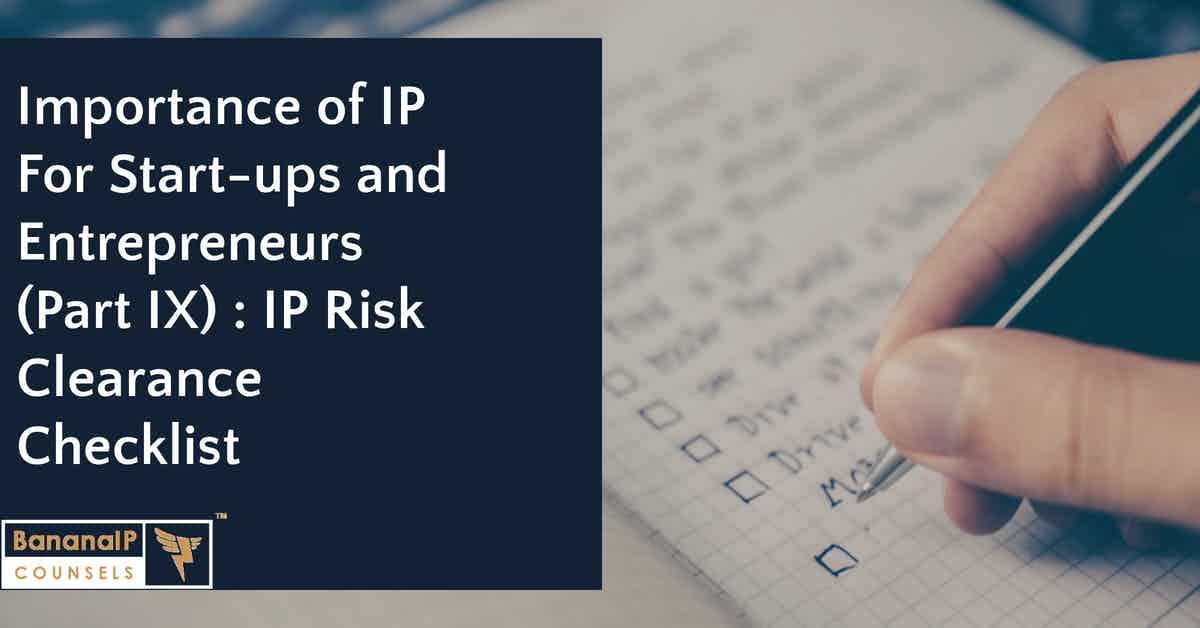Clearing IP Risks is very important before starting a business. A mistake with respect to this can kill a start-up.
Some basic IP clearance steps to be taken by all start-ups and entrepreneurs are:
Patent Risk Clearance
- Check if your business idea is the subject of any IP/Patent protection by another person or entity.
- Perform a patent search to check if any patents cover any aspect of your business.
- If your business or technology falls within the scope of any patent, perform a risk analysis.
- Look for strategies to design around, and if no such strategies exist, acquire a license or drop the business idea.
- Avoid using any patented technology without prior permission or license.
Trade Mark Risk Clearance
- Perform a search to check if the trade mark you have chosen for your business is being used by any one, or is proposed to be used by anyone.
- Conduct a trade mark search in government databases to identify if any one holds rights with respect to the trade mark.
- If any business is using the trade mark, or if any person holds trademark rights, drop the trademark, and go for another one.
- Ensure that the logo designer signs an agreement to transfer IP rights in the logo designs or mark designs to the start-up. Take indemnity for any third party IP usage in the designs, and risks therefrom.
- Educate the designer about the importance of avoiding violation of trade mark rights through copying designs, imitating, etc.
- Register domain names with respect to your trade mark. For example, bananaip.com for BananaIP. It is better to avoid a mark if someone else is using the domain name for your mark.
Copyright Risk Clearance
- Avoid copying, or imitating websites of competitors.
- Sign agreements to transfer IP rights to the start-up with an indemnity clause for losses coming from copying others’ content/designs.
- Educate your web developer/designer about the importance of avoiding copying of third party content or designs.
- Incorporate a well defined set of terms and conditions, and take down policy.
- Take extra care while using third party content, user generated content, etc. Note that something that is accessible on the internet is not free for use.
Trade Secret Risk Clearance
- Do not use trade secrets or confidential information of a competitor, directly or indirectly. Get a risk clearance opinion before embarking on third party information usage.
- Do not hire employees, who come with trade secrets and confidential information of a competitor.
- Execute employment agreements with strong confidentiality clauses.
- Mark all your materials – PPTS, proposals, business plans, etc, with confidentiality notices.



